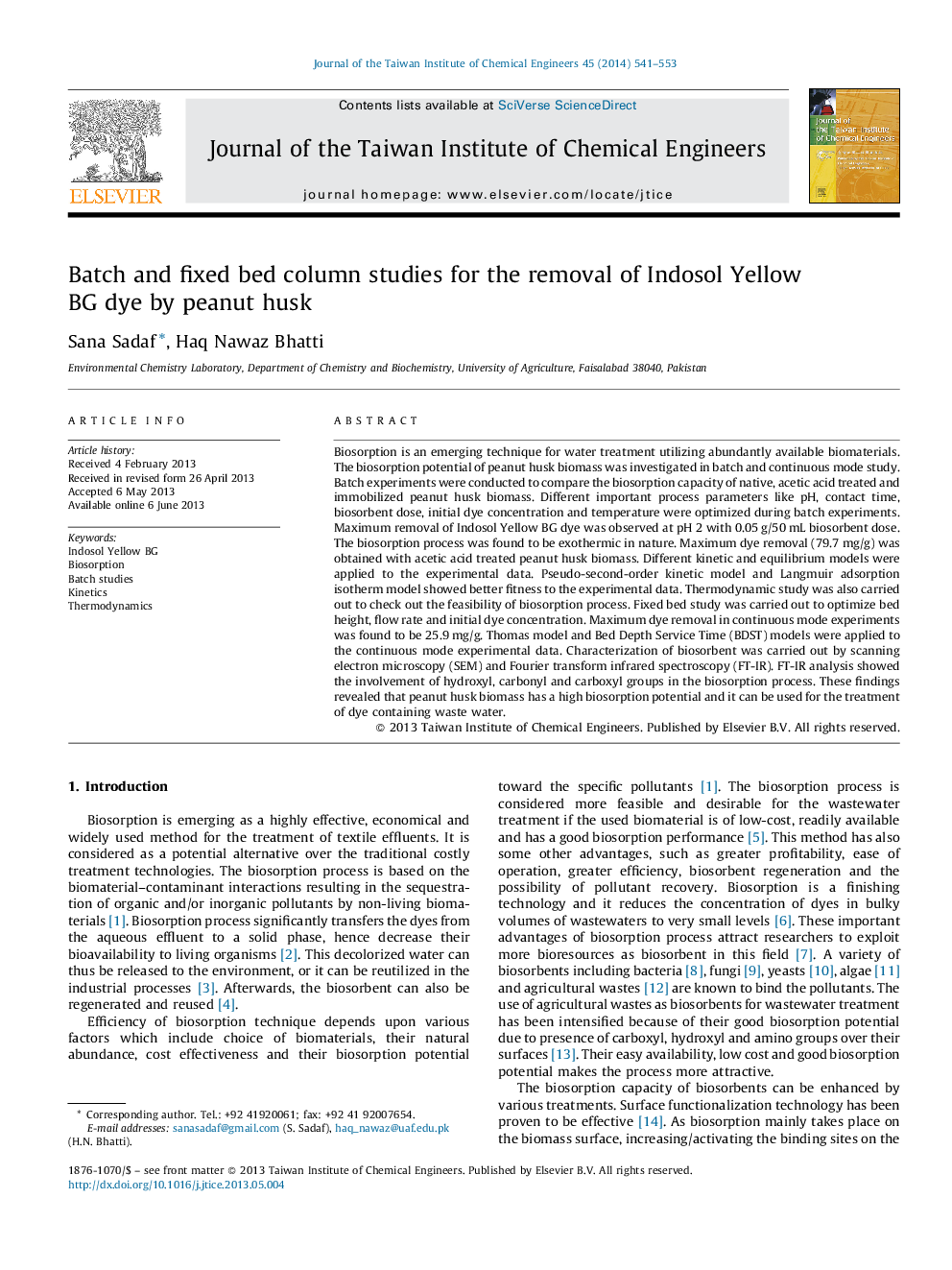| Article ID | Journal | Published Year | Pages | File Type |
|---|---|---|---|---|
| 691394 | Journal of the Taiwan Institute of Chemical Engineers | 2014 | 13 Pages |
•We used low cost agricultural waste for the removal of Indosol Yellow BG from aqueous solution.•The results indicated that equilibrium was established within 30–45 min.•Langmuir model provided the best correlation of the experimental data.•Breakthrough capacities were investigated in column mode study.•The data was subjected to Thomas Model and Bed Depth Service Time (BDST) model.
Biosorption is an emerging technique for water treatment utilizing abundantly available biomaterials. The biosorption potential of peanut husk biomass was investigated in batch and continuous mode study. Batch experiments were conducted to compare the biosorption capacity of native, acetic acid treated and immobilized peanut husk biomass. Different important process parameters like pH, contact time, biosorbent dose, initial dye concentration and temperature were optimized during batch experiments. Maximum removal of Indosol Yellow BG dye was observed at pH 2 with 0.05 g/50 mL biosorbent dose. The biosorption process was found to be exothermic in nature. Maximum dye removal (79.7 mg/g) was obtained with acetic acid treated peanut husk biomass. Different kinetic and equilibrium models were applied to the experimental data. Pseudo-second-order kinetic model and Langmuir adsorption isotherm model showed better fitness to the experimental data. Thermodynamic study was also carried out to check out the feasibility of biosorption process. Fixed bed study was carried out to optimize bed height, flow rate and initial dye concentration. Maximum dye removal in continuous mode experiments was found to be 25.9 mg/g. Thomas model and Bed Depth Service Time (BDST) models were applied to the continuous mode experimental data. Characterization of biosorbent was carried out by scanning electron microscopy (SEM) and Fourier transform infrared spectroscopy (FT-IR). FT-IR analysis showed the involvement of hydroxyl, carbonyl and carboxyl groups in the biosorption process. These findings revealed that peanut husk biomass has a high biosorption potential and it can be used for the treatment of dye containing waste water.
